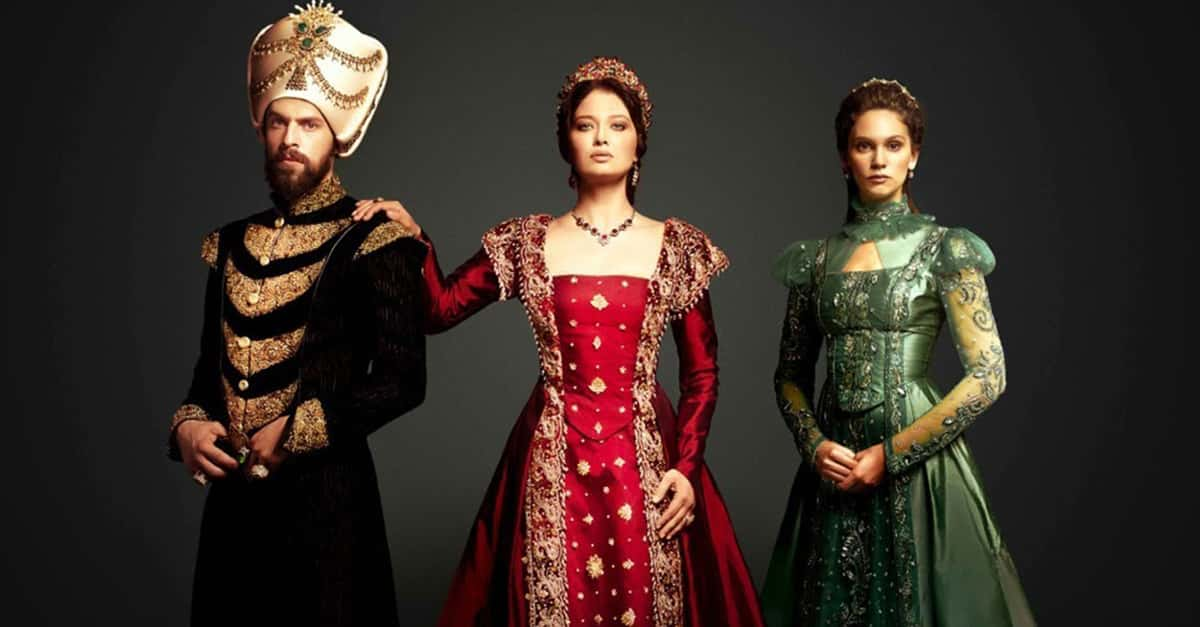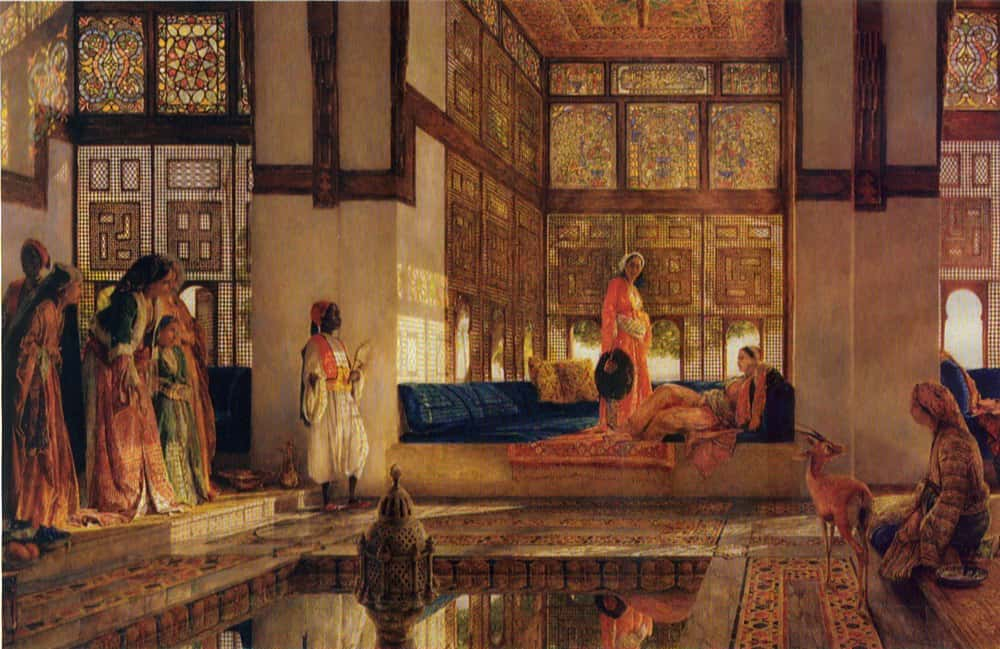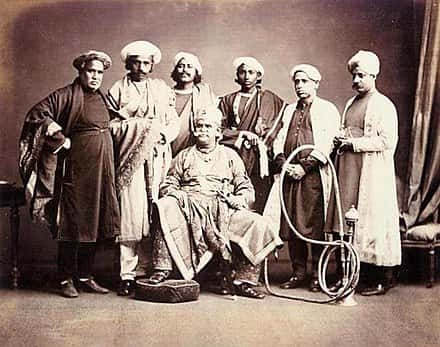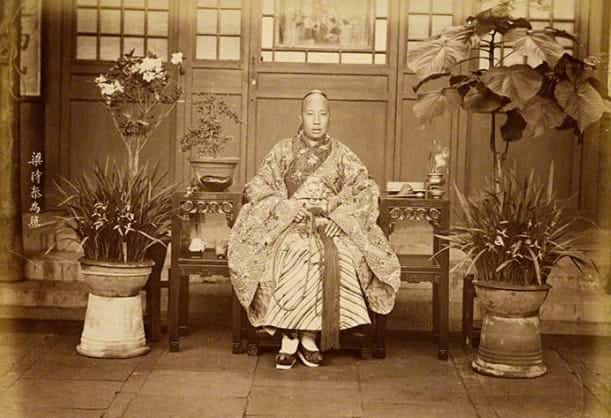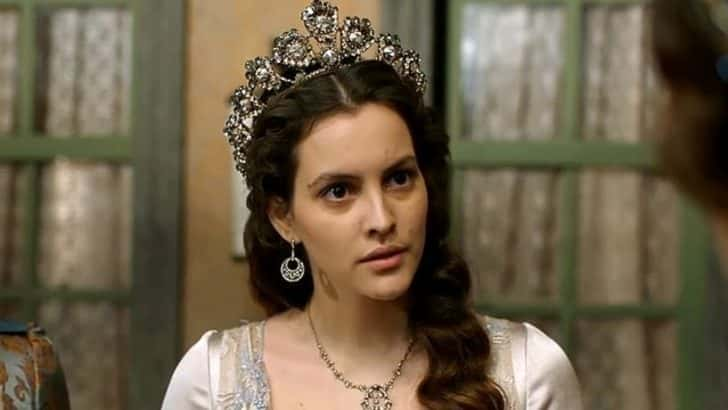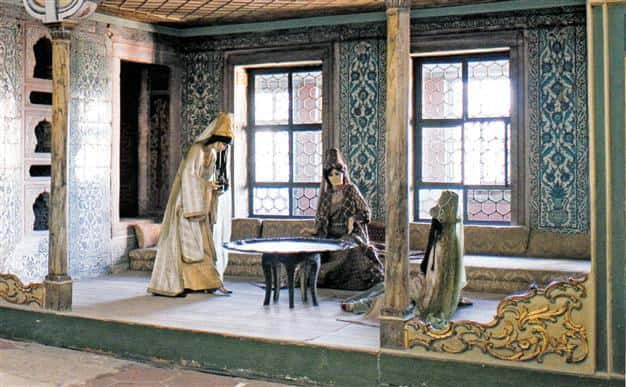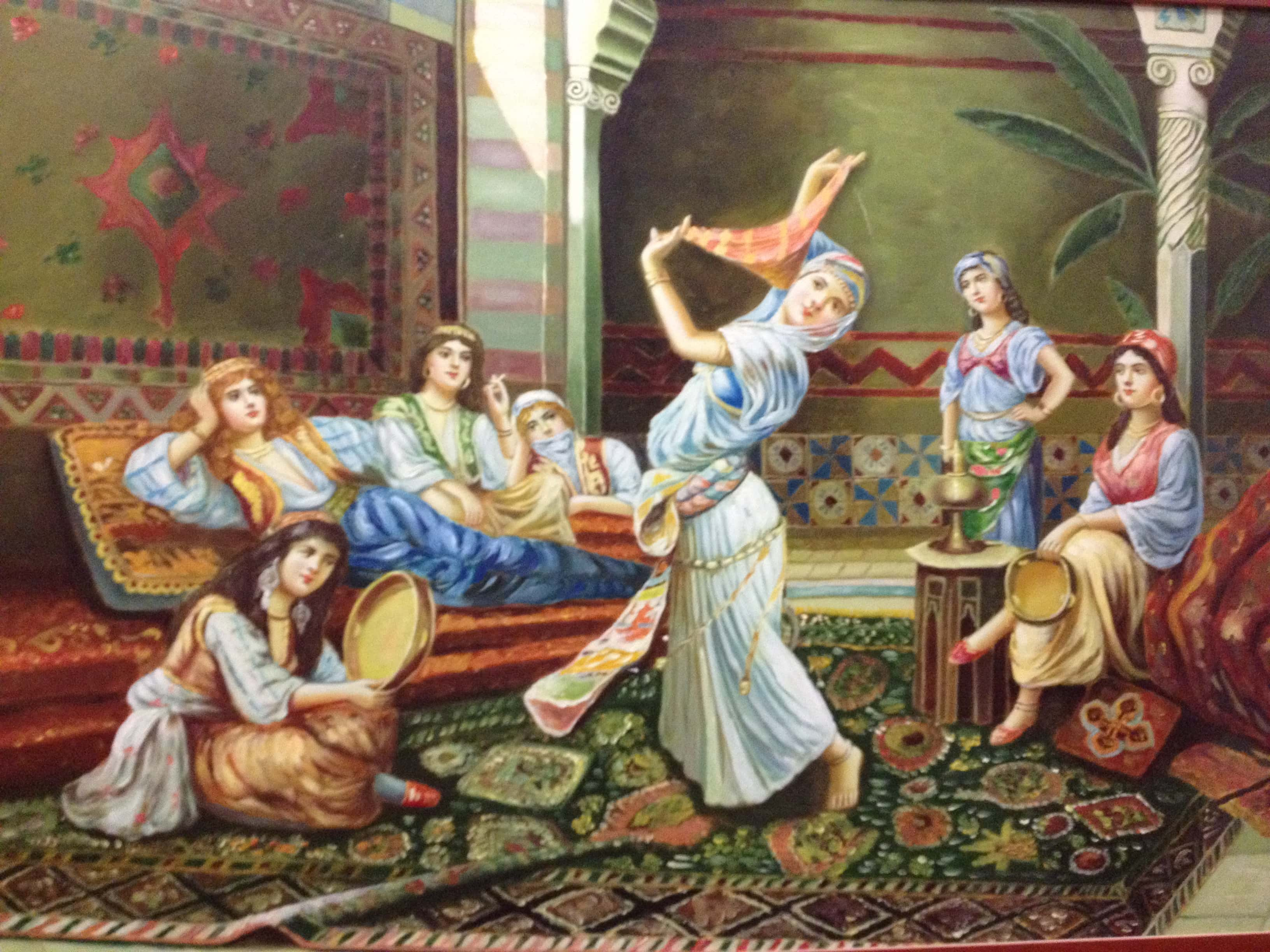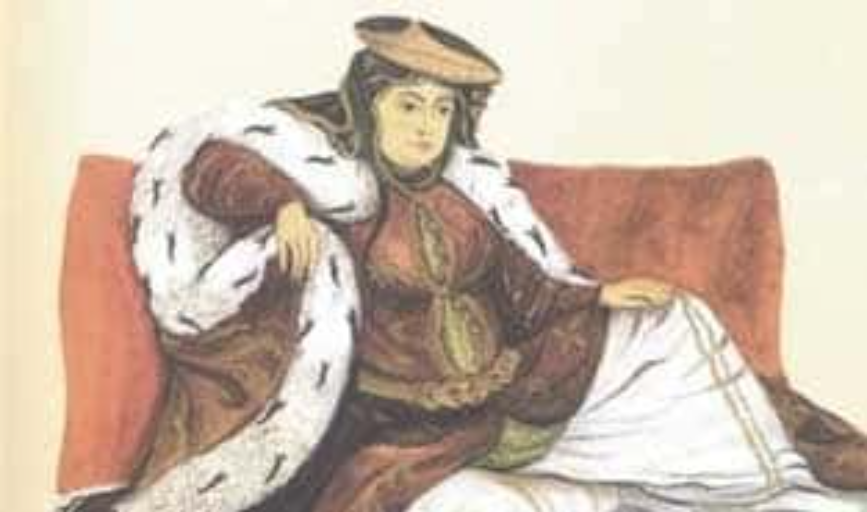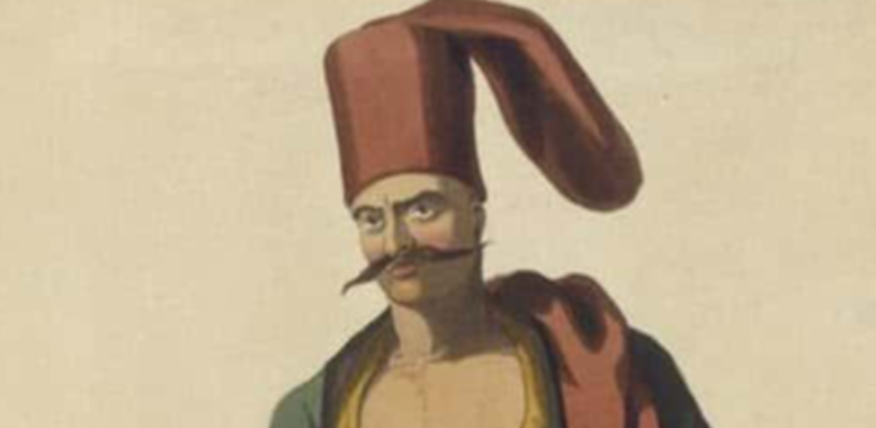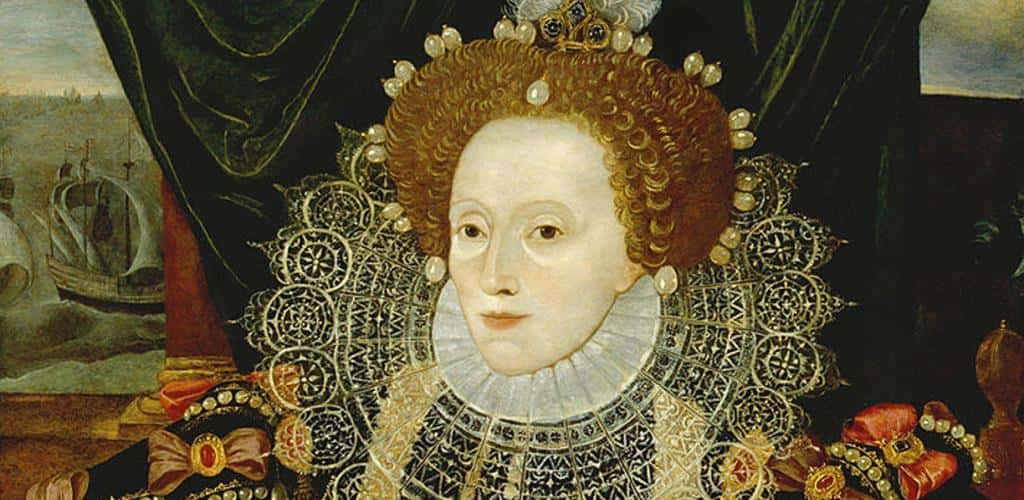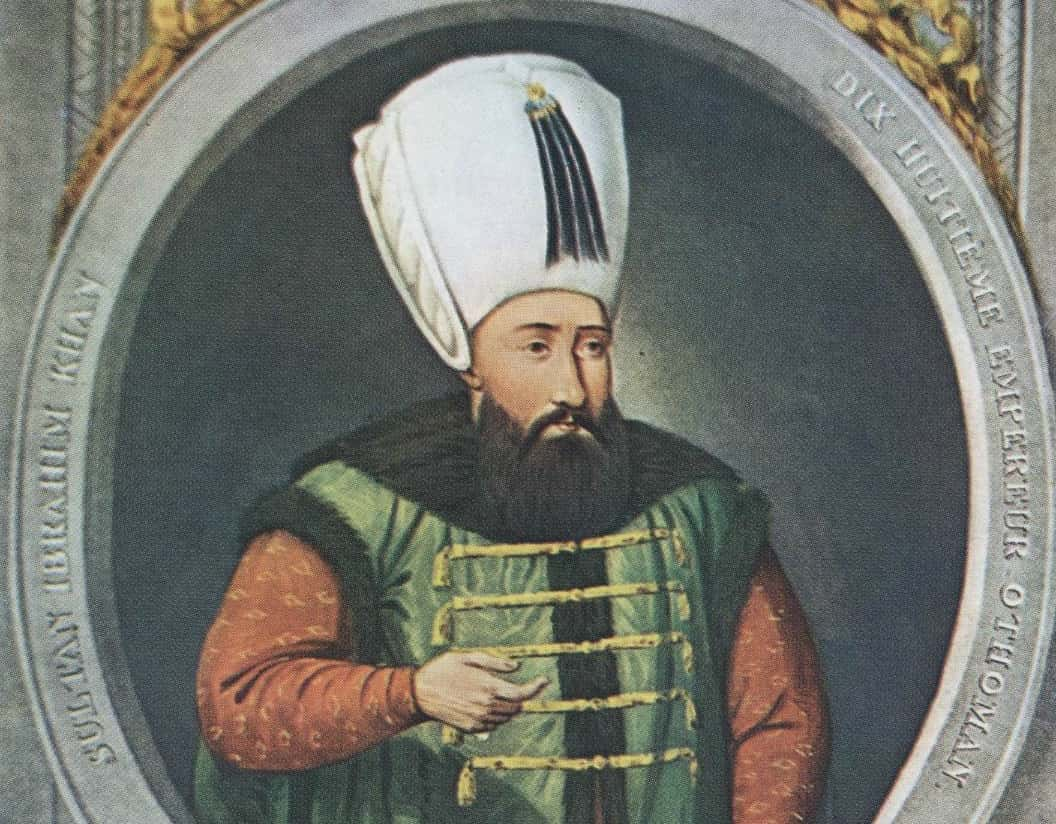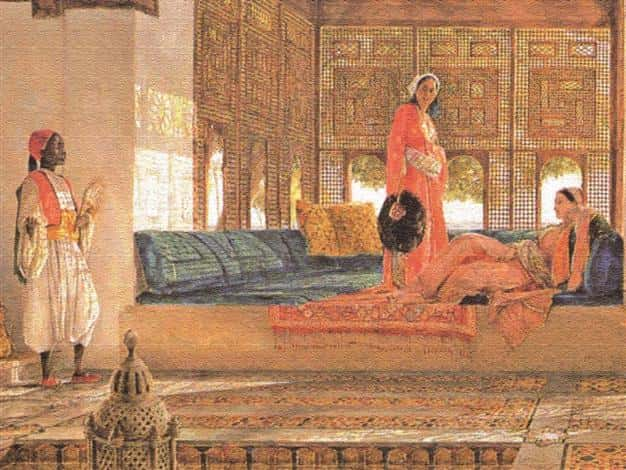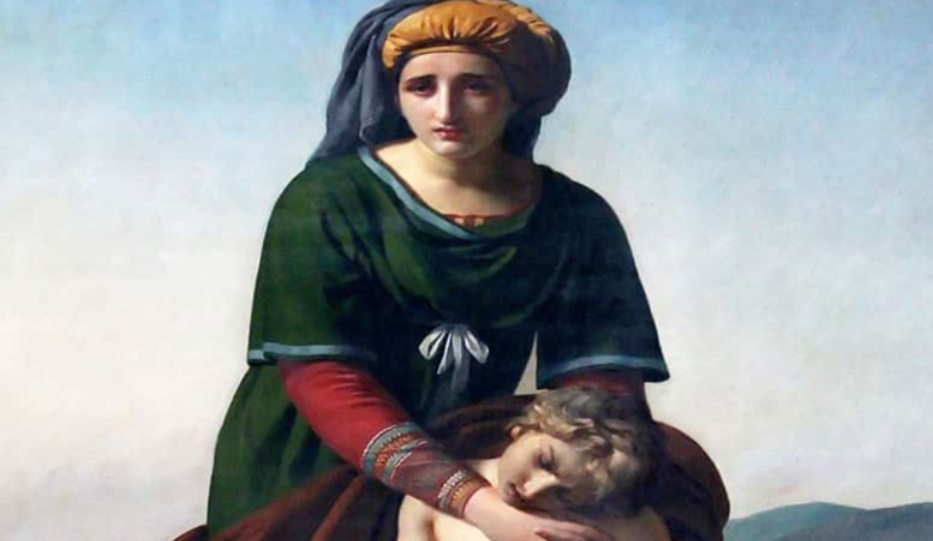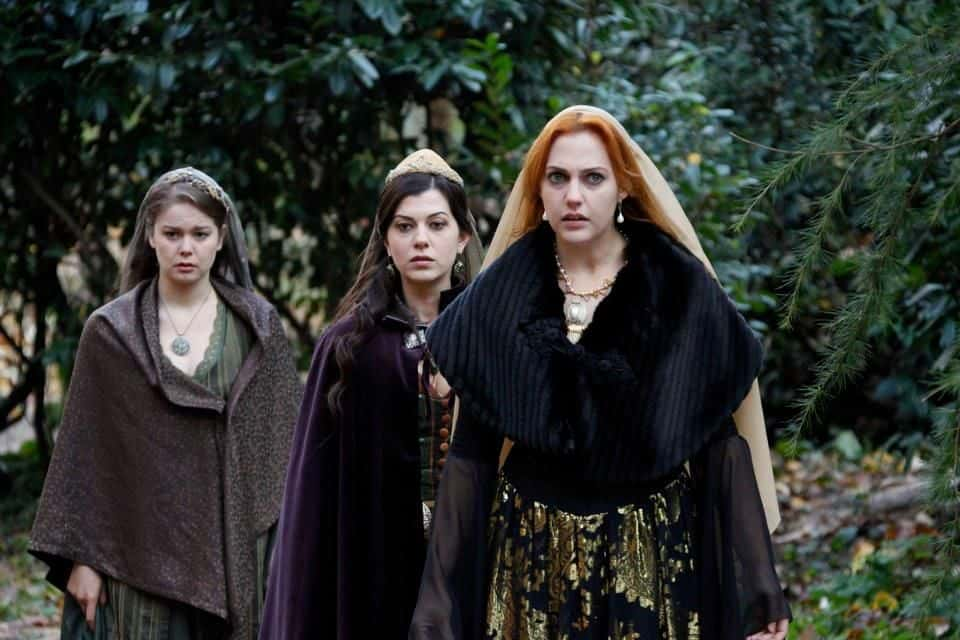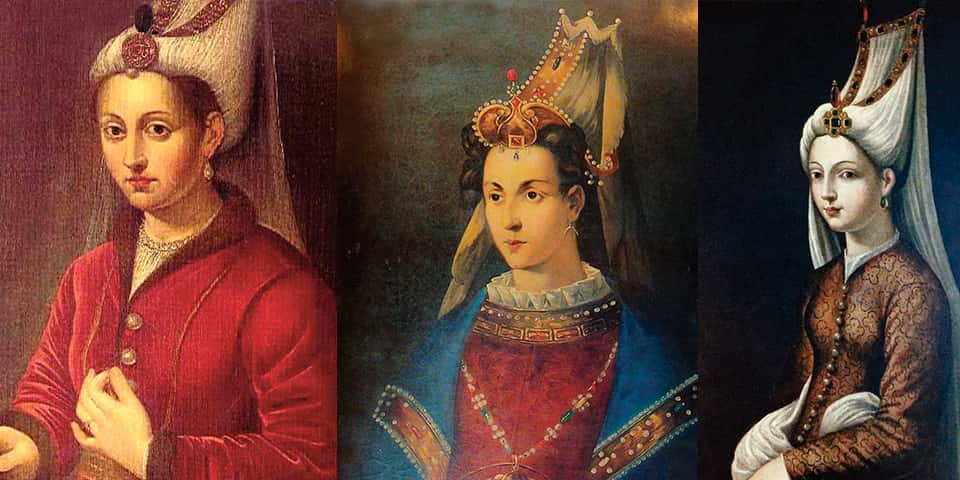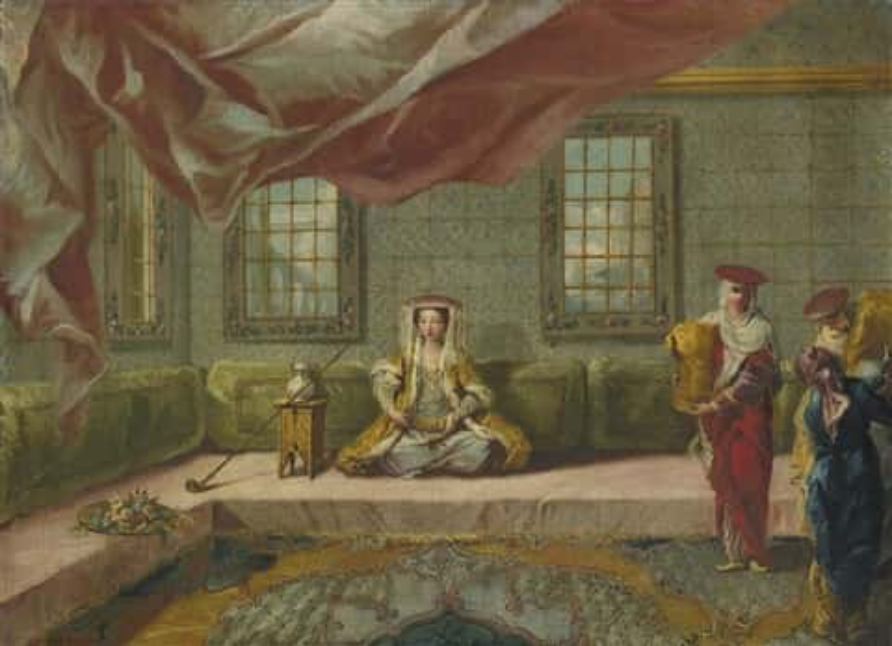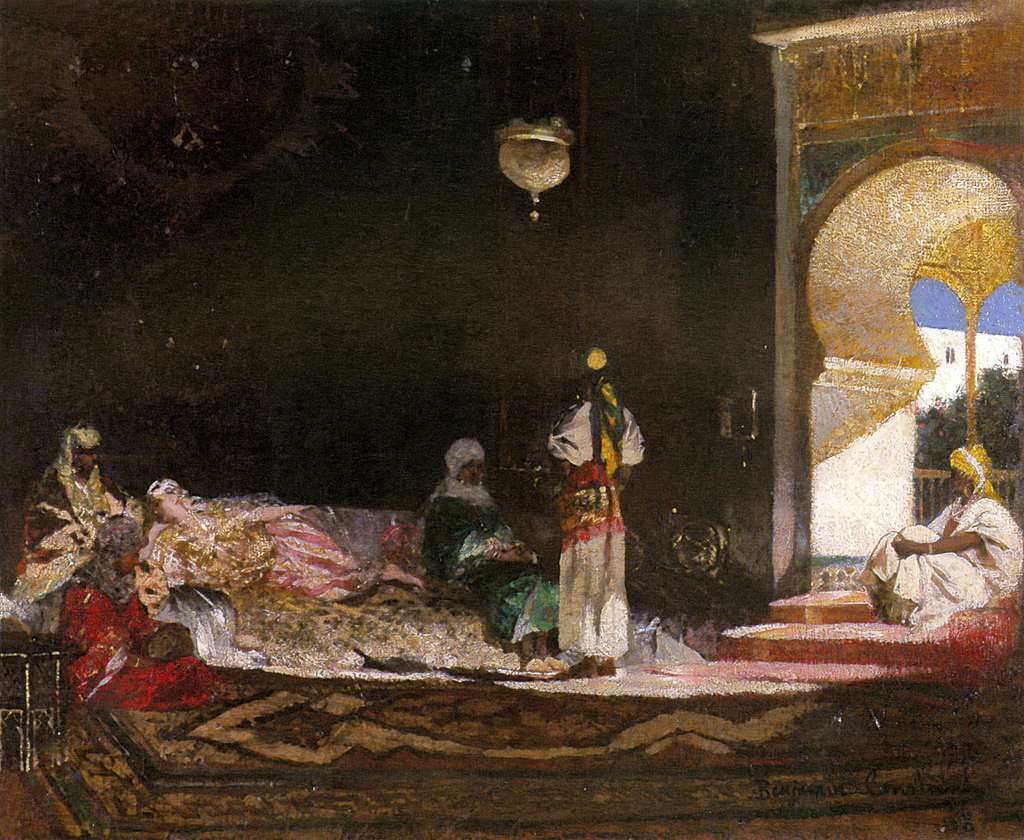Harems—because of their secluded nature—are difficult subjects in art and history. Western art often portrays harems as illicit dungeons, where “exotic” women are stored for personal use. Even historic writing has taken off with decadent tales of scandal between concubines and their masters. However, it’s important to position these stories with caution; in most cultures where harems existed, gossiping about women in other people’s harems was considered taboo, and these already hushed stories were often told through an Orientalist gaze. So what really went down in these mysterious places? To clarify things, we have 44 facts about harems and the women, children, and eunuchs who gave life to these private spaces.
44. Boys Allowed
Contrary to western myth, the harems of Asia were not usually all-female pleasure caves that operated at the whims of a master. We’d hope not: consider how the Ottoman Imperial Harem (arguably the most documented harem in history) was home to the reigning sultan’s mother, his female family members (sisters, aunts, etc.) and his pre-adolescent sons! For the most part, the harem was simply a sacred section of a Muslim household where women and children resided.
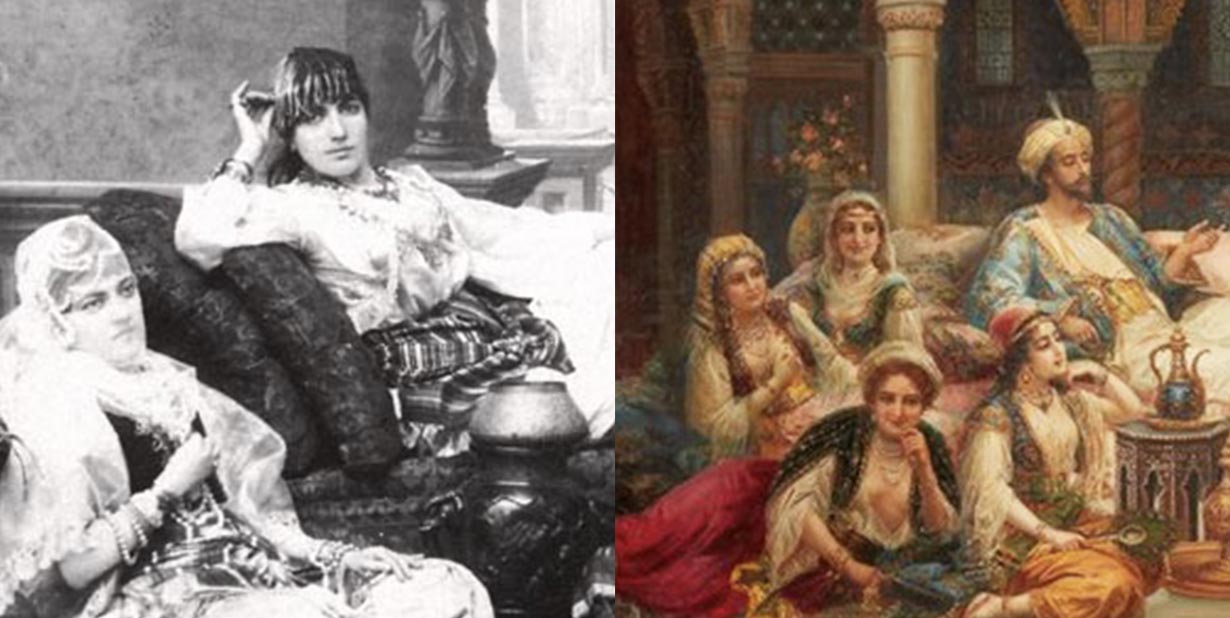
43. Hidden Places
The word “harem” is derived from the Arabic harim or haram, which connotes the secluded or forbidden.
42. False Accreditation
Although popular culture has come to heavily associate harems as a Muslim practice, the concept did not originate in Islam. The Byzantine Empire, Ancient Greece, Persia, and the upper classes of Iraq all practiced the collection and seclusion of woman into separate spaces well before the advent of Islam.
41. Make My Harem a Double
Before the 16th century, the Ottoman Imperial Harem was organized between two separate residences. First, there was the huge “Old Palace” in Beyazit Square, Istanbul which housed most of the female servants, the royal family, and pregnant concubines. Only concubines who were currently sexually active with the sultan would be housed in apartments near his own (a carriage ride away) at the Topkapi Palace. These households did not fully assimilate until the reign of Murad III in the late 1500s.
40. Maybe a Little Excessive?
The largest harem in the world belonged to King Tamba of Benaras. The 6th century BCE king’s harem was about the size of a city and housed approximately 16,000 inmates.
39. $tanding Guard
Eunuchs weren’t simply harem guards—they were bridges between the male and female world, acting as envoys and proxies in important political transactions. As the only men who could penetrate both the public and private spheres, eunuchs would network to become rich and powerful in their own right. The Chief Black Eunuch of the Imperial Harem, for example, was considered second only Grand Vizier (the head of the government) in terms of public power.
38. Head of Heart & Home
In the 16th and 17th centuries, the chief consort of the Ottoman sultan was given the title of “Haseki Sultan". She came only second to the sultan’s mother and ruled the harem if the mother was passed or otherwise indisposed. This woman was also almost always a slave of European origin.
37. One Son Rule
Before the 16th century, tradition held that concubines of the Imperial Harem should give birth to only one son each (if she had daughters, her adult relations with the sultan could continue until she had a boy). This protocol ensured that each potential sultan had the full attention of one maternal advisor—and that no one concubine ever held too much power over the others.
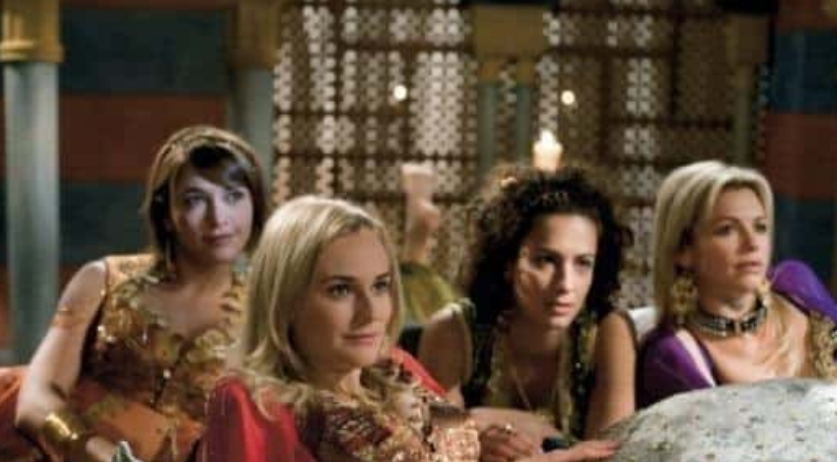 Esteemology
Esteemology
36. A Bank and File Army
All members of the harem received a daily stipend, and it’s from this accounting that historians have been able to sketch an idea of where women and eunuchs ranked amongst each other. For example, the sultan’s mother received 2,000 to 3,000 aspers a day, his chief consorts received 1,000, and public officials received just a few hundred a day.

History's most fascinating stories and darkest secrets, delivered to your inbox daily.
35. Mommy, Can You Spare an Asper?
In terms of cashflow, the queen mother—as acting leader of the harem—was wealthier than her own son. For example, the Valide Safiye Sultan received 3,000 aspers a day as her living stipend while her son, Sultan Mehmed III, lived on just 1,000.
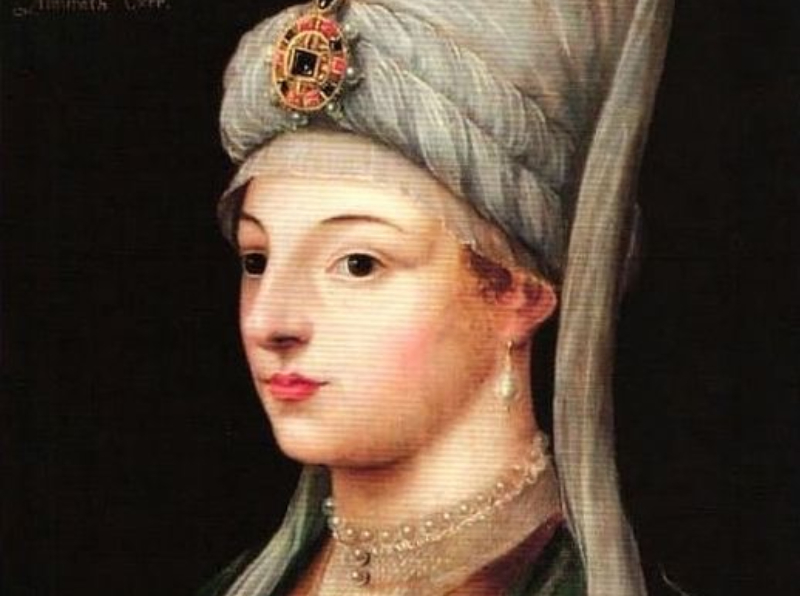 Unknown Author, CC BY-SA 4.0, Wikimedia Commons
Unknown Author, CC BY-SA 4.0, Wikimedia Commons
34. Little is Lost in Translation
Harems were also a fixture in Ancient China. Emperors would house their consorts, concubines, and female servants in the “hougong,” a word and institution which roughly translates to “harem". Makes sense.
33. A Municipality of Maids
Kublai Khan himself had a large harem. He married four women and kept as many as 7,000 concubines.
32. Winner by a Hair?
Power struggles within the harem could get violent and dangerous. Arguably the most violent harem rivalry was between famous queen grandmother/regent of the child-Sultan Mehmed IV, Kösem Sultan, and Mehmed’s mother, Turhan Hatice Sultan. This struggle over who should rule the roost (and have custody of Mehmed) culminated with Turhan having Kösem strangled (by her own long hair, according to legend).
 Hobbyist Artist and Love Fangirling - Tumblr
Hobbyist Artist and Love Fangirling - Tumblr
31. Before There Were Instagram Stories
Much contemporary Western belief about Muslim women’s lives comes from the letters of Lady Mary Wontly Montagu. As the wife of the English ambassador to Turkey, she was invited to Muslim women’s spaces, which were forbidden to male travel writers. To some degree, Montagu’s letters took the western male tourist gaze to task. Her interactions with women provided a slightly more accurate account of harem dress, habits, and beauty rituals.
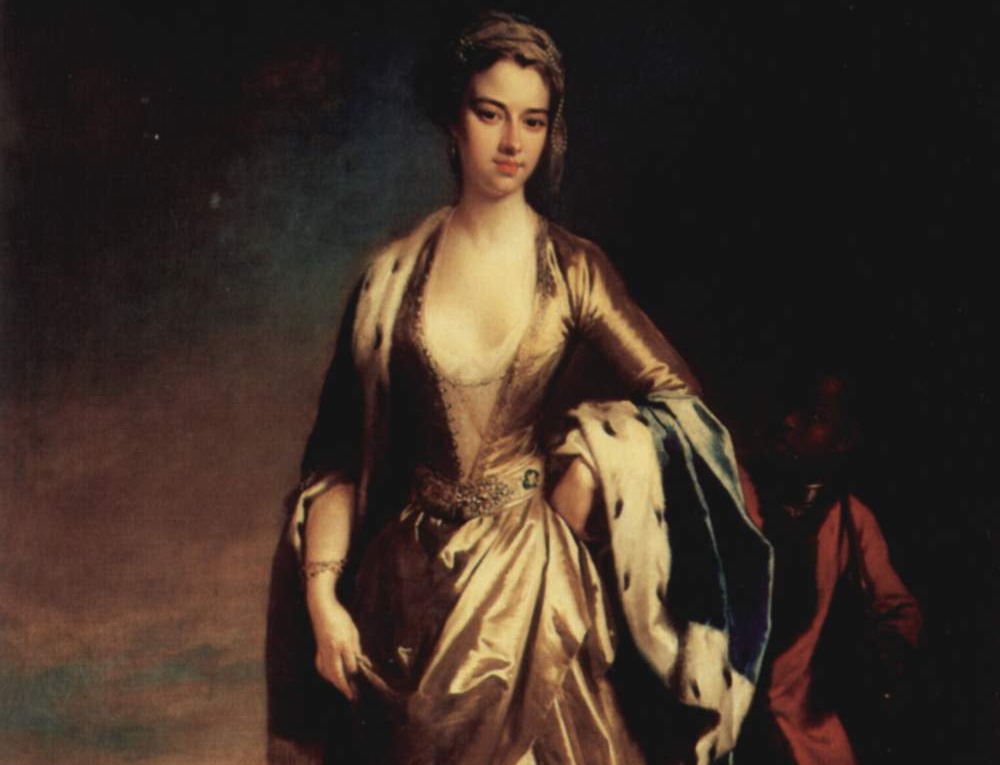 Jonathan Richardson the younger, Wikimedia Commons
Jonathan Richardson the younger, Wikimedia Commons
30. The Slappin’ Sultana
In 1868, Empress Eugenie of France made a scandalous first impression upon the Imperial Ottoman Harem. Sultan Abdulaziz made the etiquette faux-pas of bringing a foreign woman to his mother’s presence without permission. Depending on who you ask, the Valide Sultan responded to this insult by slapping the Empress across the face.
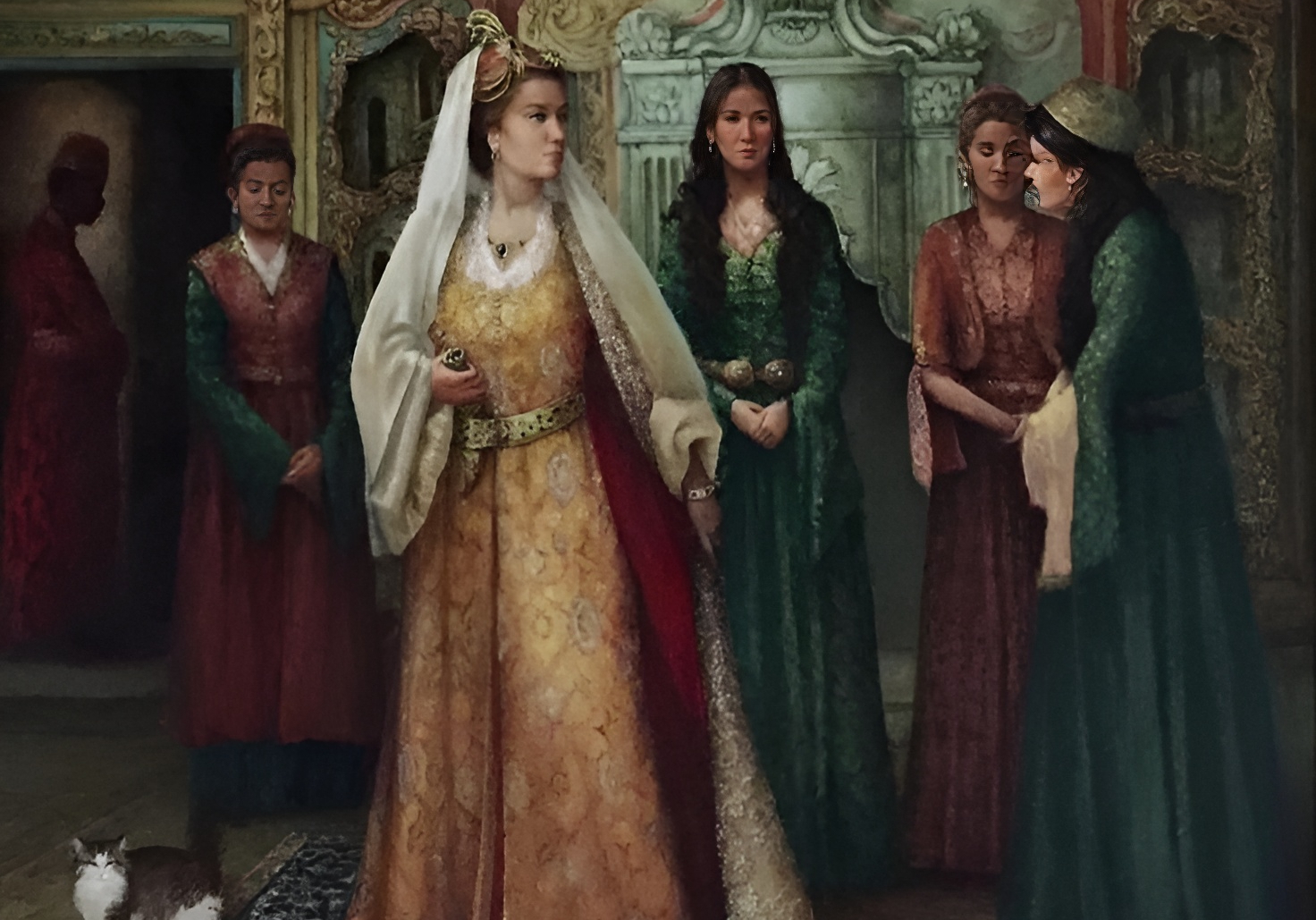 Unknown Author, CC BY-SA 4.0 , Wikimedia Commons
Unknown Author, CC BY-SA 4.0 , Wikimedia Commons
29. Isolation and Exploit
As the home of slave work and slave education, harems were also home to tyranny , punishment, and brutality. Sultan Ahmed I, for example, had one of his own concubines beaten simply because she had annoyed his favorite consort, Kösem.
28. Girls to Count on
Due to harem life’s cloistered nature, upper-level women depended on freeborn Jewish women called kiras to be their economic agents in public.
27. New Rules
After the 17th century, titles within the Imperial Harem became more about seniority rather than favoritism. The consorts began to be ranked the first, second and third, etc. based on who birthed a son first. The idea of a master’s “favorite” faded, and sexually active or pregnant concubines were simply called ikbals.
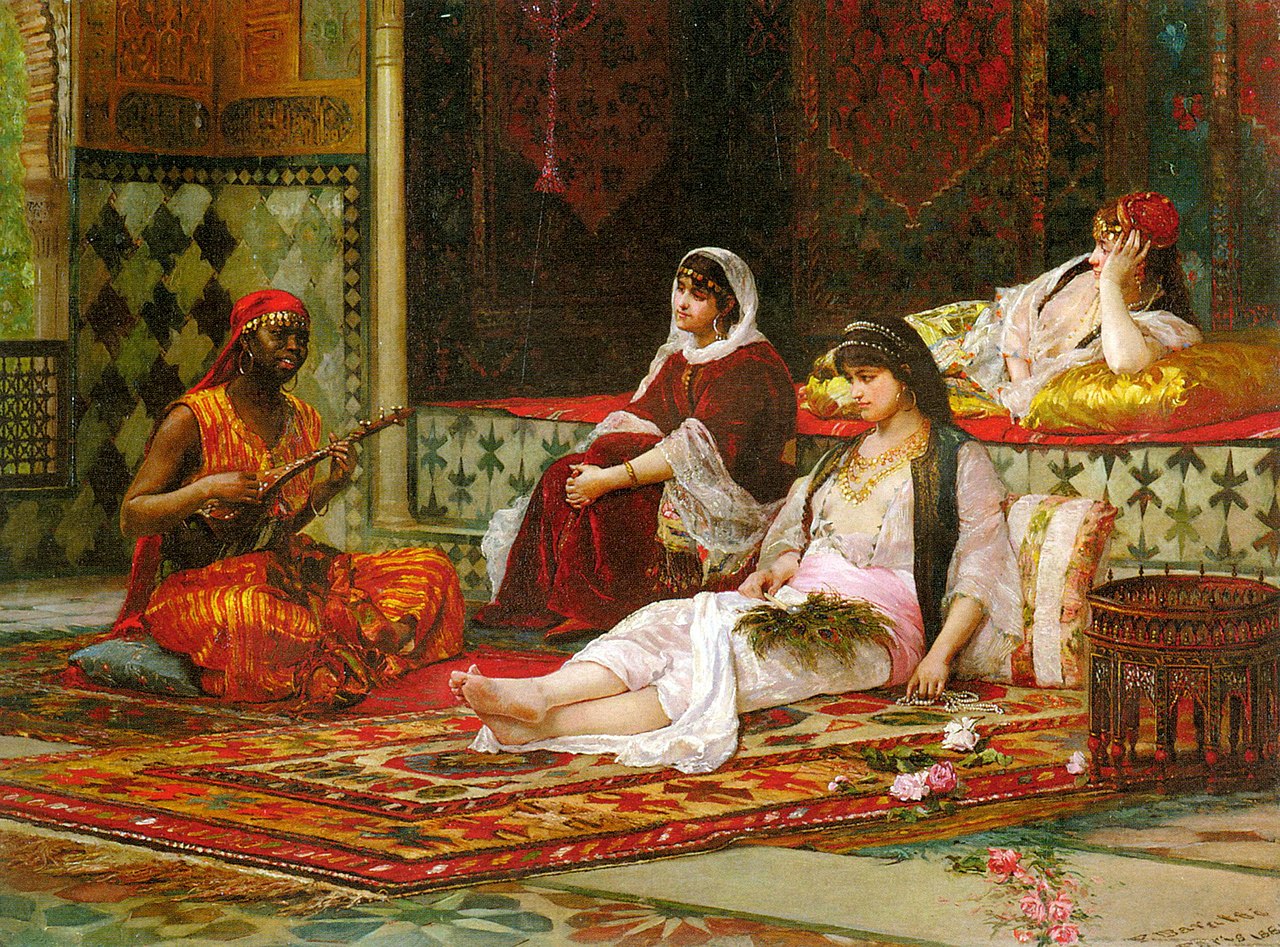 Filippo Baratti, Wikimedia Commons
Filippo Baratti, Wikimedia Commons
26. The End of the Harem
The last consort of the Imperial Harem survived until 1992! Nezvad Hanim was the final official consort of the 36th and final sultan of the Ottoman Empire, Mehmed VI. After being deposed in 1922, Mehmed and Nezvad went into exile in Italy. When Mehmed passed, Nezvad returned to Istanbul and had two children with a sea captain (her union to Mehmed had been childless).
25. Long Distance Lady Friends
The Ottoman Imperial Harem’s leader, who was usually the queen mother, would often act as a diplomat. Take Safiye Sultan, the mother of Mehmed III, who had a longtime pen pal relationship with Elizabeth I of England. Safiye was a huge fan of Elizabeth’s style (in politics and fashion), personally scribed letters to her, and even owned a personal portrait of the Virgin Queen.
24. A Concubine Pushed Over the Edge
According to legend, Emetullah Rabia Gülnuş Sultan allegedly liquidated her rival, Gülbeyaz, while the latter was sea-watching. Gülbeyaz was either pushed over a cliff into the ocean by Emetullah herself, shoved by an assasian, or simply strangled while sea-watching.
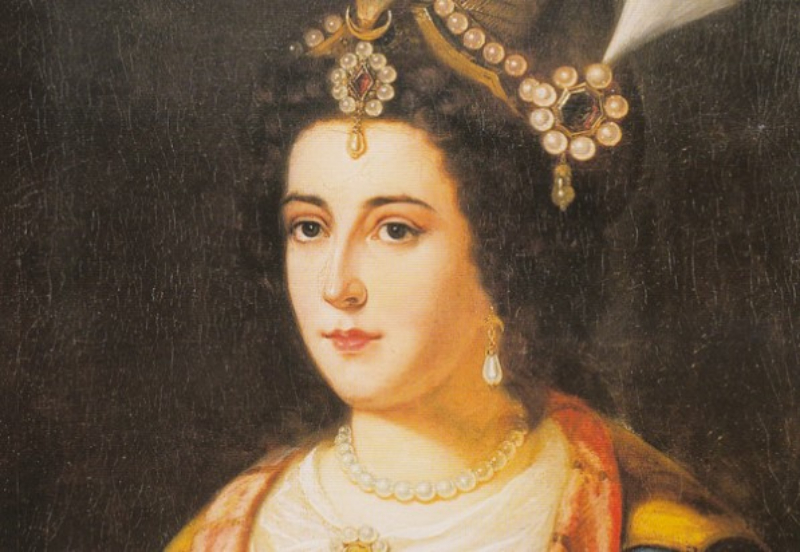 Unknown Author, Wikimedia Commons
Unknown Author, Wikimedia Commons
23. Not-So-Eternal Flame
Muazzez Sultan was the mother of the future Ahmed II. Unfortunately, she never survived to rule her son’s harem: a huge palace fire caused Muazzez to pass of fright in 1687, years before he ascended.
22. Big Love
Usually, an Imperial Harem would just have one haseki sultan (the favorite concubine). However, Ibrahim the Mad lived up to his name, broke the tradition, and appointed eight “favorites” over just eight years of rule.
21. Cutting Themselves Off From Mom
A prince would mark his graduation from the Imperial Harem with extravagant celebrations…and a public circumcision. After the procedure, he was declared officially mature and cut out (pun intended) to start a princely harem of his own. "Public" and "circumcision" are two words I seriously never thought could ever go together, but here we are.
20. Haters Gonna Get Fired
The harem faced harsh pushback from those who did not appreciate that women appeared to manipulate politics from the shadows. In 1582, it was Grand Vizier Sinan Pasha who said, “Empires are not governed with the counsel of women, and moreover that authority does not rest with [the queen mother], even though she might try to make it seem so". The queen mother, Nurbanu Sultan, promptly fired him. Shoulda seen that coming.
19. Game of Weddings
Even if she were a slave, a mother held the right to decide how her daughter was married. A concubine could leverage more power within the harem by marrying her daughter to a powerful statesman. Kösem Sultan, for example, married her eldest daughter, Princess Ayse, seven times for advantage while the girl was still a toddler.
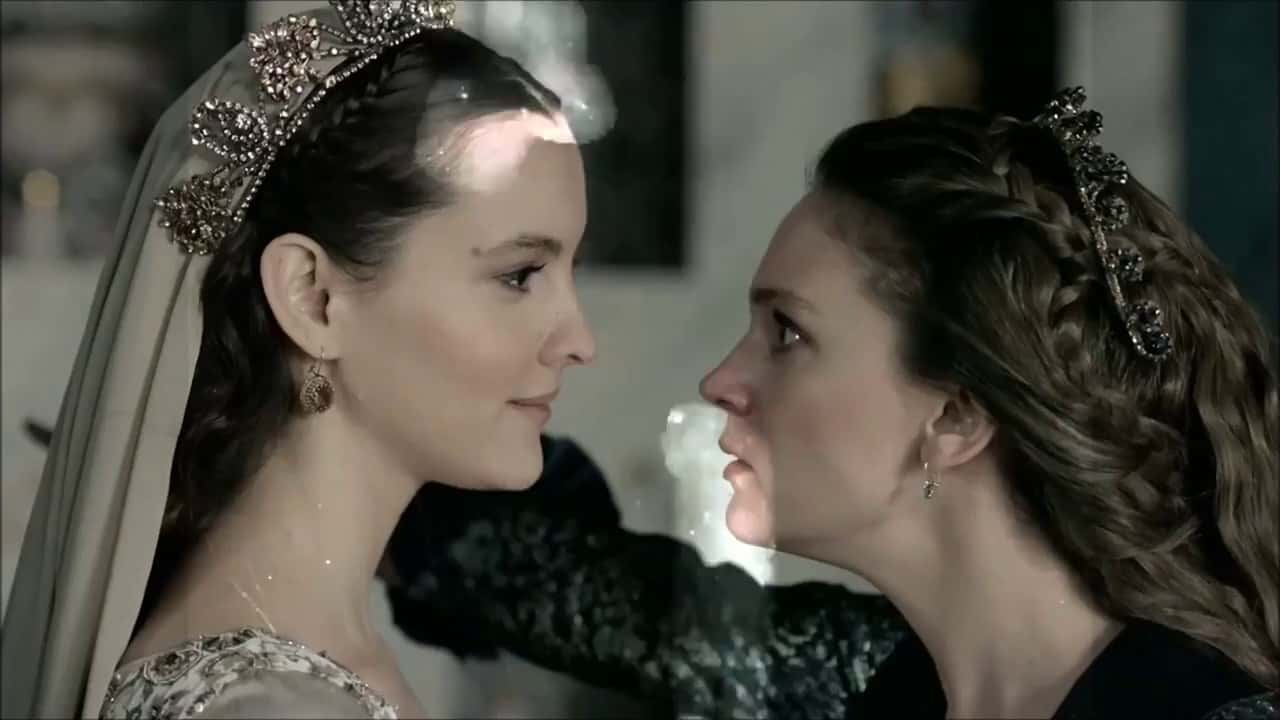 YouTube
YouTube
18. The Mommy Lobby
In the 17th century, the mothers rose to unprecedented significance in Ottoman politics. Throughout the age of imperial expansion, a male heir could prove his worth when he graduated the harem and ruled a province in his own right. However, this practice stopped in the early 1600s, when princes were kept under strict house arrest in the kafes, as a precaution against rebellion, until the reigning sultan passed and the next oldest male would succeed him. With this exclusion of princes from public life, it was up to concubine mothers—famous valides like Kösem, Halime, and Turhan—to do the external lobbying and power plays on their son’s behalf until he ascended to the throne.
17. Solace in Diversity
Because most harem inhabitants were of slave origin, taken in Tatar raids from other kingdoms, these structures could be very ethical and culturally diverse places. Leslie Pierce describes the Imperial Harem, the largest of its kind, as a sort of Tower of Babel where a foreign slave did not have to walk far to find someone who spoke their mother tongue.
16. The Price of Freedom
If a concubine gave birth to her master’s child, she could not be sold off and separated from her offspring. She also became a free woman upon her master’s demise.
15. Stiff Competition
The clear majority of harem slaves rarely interacted with the master, let alone slept with him. Only a select few in the Imperial Harem, for example, ever became formal consorts; the rest served as attendants to higher-level women before being married off to family allies as “reward" for their service.
14. In Bed With the Frenemy
At the height of her power, the young (but supreme) queen mother Turhan Hatice Sultan was rumored to have taken a fellow harem woman, Meleki Hatun, as her lover. This story seemed to have been spread maliciously after Meleki deserted Turhan’s mother-in-law, Kösem, and warned Turhan of Kösem’s plans to end her. This allowed Turhan to strike first and eliminate Kösem as the head of the harem. Meleki became a close (and rich) member of Turhan’s inner circle in her own right.
13. An Equal Opportunity Offender
The 18th century Emperor Jehangir of India kept a large female harem, but he also had another 1,000 men-in-waiting for when he desired the company of the other gender.
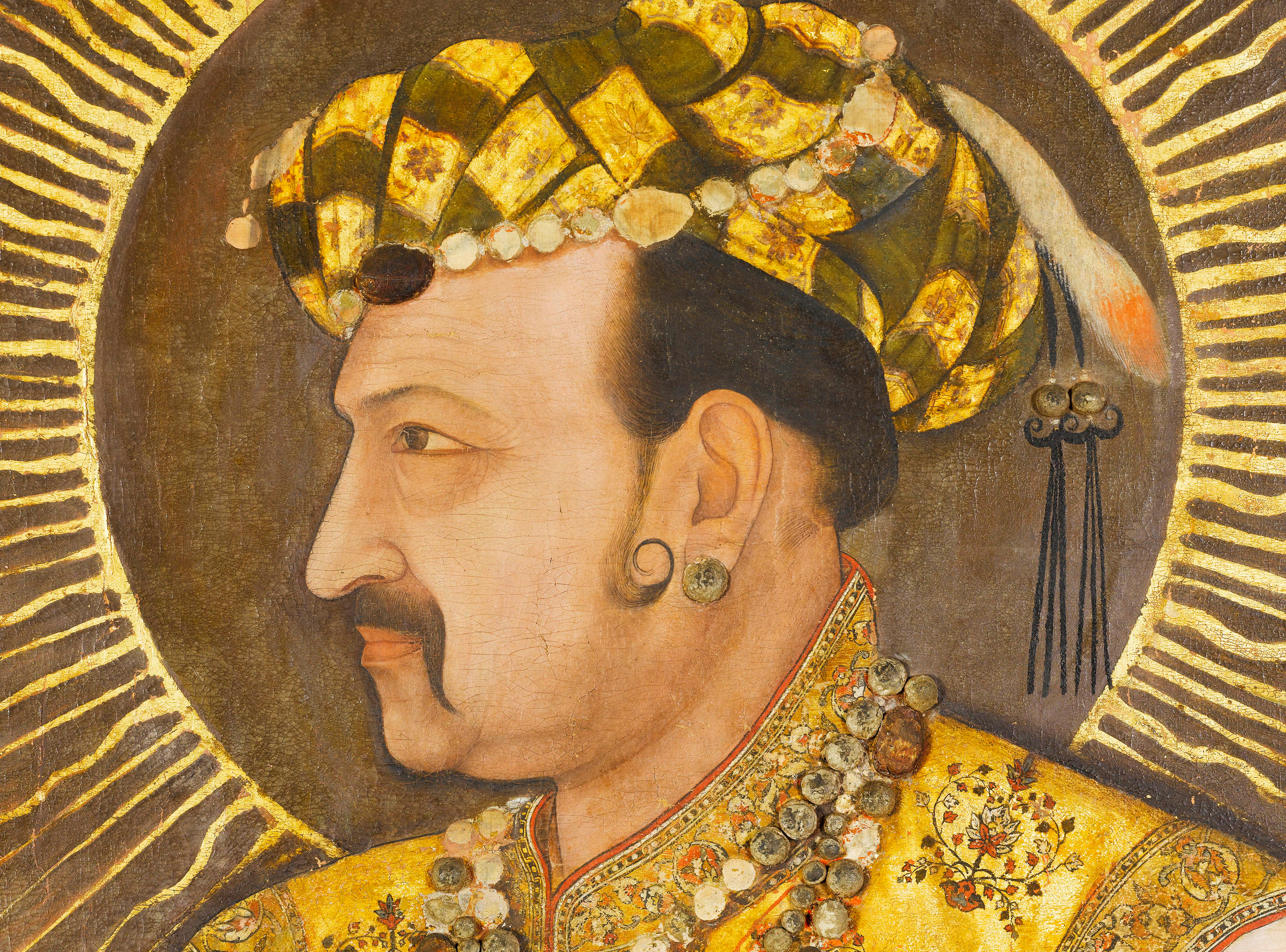 Abu al-Hasan, Wikimedia Commons
Abu al-Hasan, Wikimedia Commons
12. Boss Ladies
The “Sultanate of Women”—the period where Imperial Harem women came into their own in state politics—is usually considered to begin with Hürrem Sultan. This Ruthenian girl became the first slave woman to legally wed a Sultan and the first woman to not live in the separate “Old Palace” with the rest of the harem, but rather her own apartments rights in the main castles next to the sultan.
11. If You Build It, She’ll Take Credit
Even from seclusion, women participated in the building of public works. For example, the Haseki Sultan Complex is both a mosque and charity center (that still stands today) which was endowed by the chief of Suleyman the Magnificat’s harem, Hürrem Sultan.
10. Class Struggle
Arguably, the idea of female seclusion is centered around class more than religion. After all, harems mostly existed in wealthy households. Female doctors, artists, and laborers had to interact with men in public to work for a living. In contrast, women who stayed harems showed off their family’s privilege by not showing themselves in public.
9. #TreatYourself1618
You can still visit the hammams of the Topkapi Palace, where harem women would treat themselves to steam baths and beauty treatments that amazed westerners such as Lady Mary Wortley Montagu.
8. Sweet Dreams Are Made of These
Europeans artists such Jean-Auguste-Dominique Ingres (who painted La Grande Odalisque and The Turkish Bath) are partly responsible for the hypersexual, decadent portrayal of harems. Most of these artists had essentially no direct interaction with actual harems and drew from a romanticized idea of the “Other” which they took from Victorian stories.
7. My Lover, My Mother, and Me
One of the most famous harem rivalries of the 16th century was between queen mother Nurbanu Sultan and her son Murad III’s favorite concubine, Safiye. Murad was reportedly so enamored by Safiye that he could not “perform” with any other women that his mother pushed on him. Threatened by the empire’s need for more heirs (as well as Safiye’s influence), Nurbanu had her daughter-in-law investigated for witchcraft. Safiye’s servants were tortured, but they refused to admit if Safiye did use “dark arts” to keep Murad soft for her.
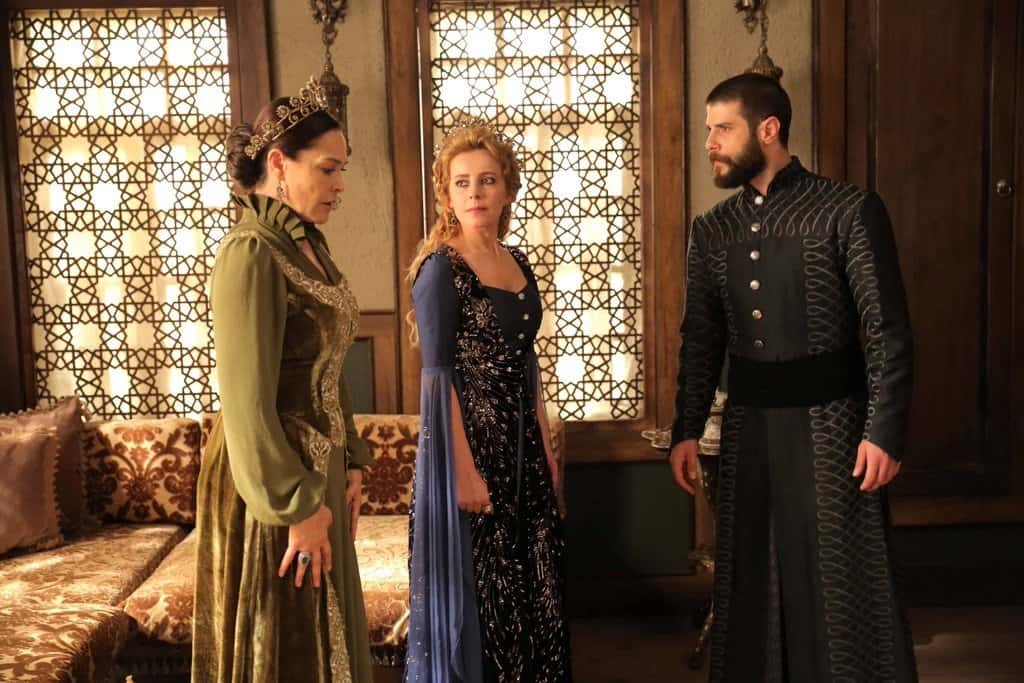 Pinterest
Pinterest
6. (Over) Doin' It
Murad III’s period of selective impotence (wherein he could not perform with any woman besides his favorite, Safiye) was followed by a period of hypersexuality. After a trip to the doctor regarding his intercourse performance, Murad fathered upwards of 50 children for his harem.
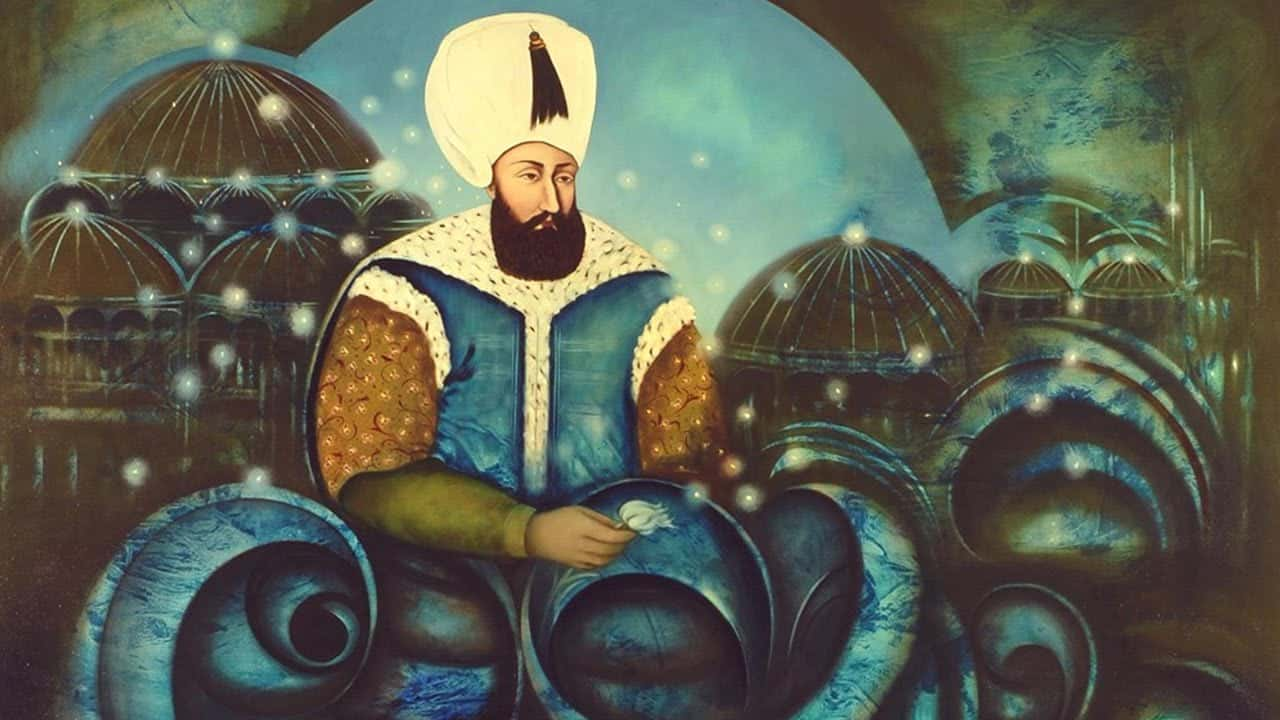 YouTube
YouTube
5. You Gotta Lose Some to Win Some!
Eunuchs could gain great political power for their proximity to the sultan and his family. One extreme example is the case of Gazanfer Agha, a Hungarian renegade who volunteered to be castrated. Gazanfer was highly ambitious and wanted to remain close to the Sultan by joining the inner household—a harem-adjacent circle that he could only enter as a eunuch. By all accounts, this move paid off; Gazanfer was one if the most influential figures of the 16th century Ottoman period.
4. Mega Mom
By far the most powerful harem mistress in history was Kösem Sultan. After the passing of Ahmed I’s mother, the Greek-born slave concubine rose to become the chief consort of Ahmed I when she and her “husband” were barely 15. Kösem was regent to her young sons, Murad IV and Ibrahim I, and her grandson, Mehmed IV, and lived to be about 62—her career in politics spanned over 40 years and she was mourned as "Vālide-i Maḳtūle" (liquidated mother) when she passed, liquidated by the mother of Sultan Mehmed IV in yet more intrigue.
 Magnificent Century: Kosem (2015–2017), TIMS Productions
Magnificent Century: Kosem (2015–2017), TIMS Productions
3. Princess Stabbity
Kaya Sultan is arguably the most famous princess to come out of the Ottoman Imperial Harem. At age 13, the daughter of Murad IV was married to a statesman, who was in his 50s. For years, Kaya refused to consummate their union. The teenager even spiked her husband with a dagger on their wedding night. Can’t blame her!
2. Losing Power
The famous Kosem Sultan's control was so powerful that after she passed, the Ottomans came to the decision to not give women the right to rule over their empire any longer. This marked the end of the period in the Ottoman Empire where women took an influential role in the Topkapi Palace, and they became even further relegated to subjects and possessions of the sultan’s rule.
1. Sharing the Sweet Stuff
Male harems are less studied in our human culture. If you’re looking for harems where that’s not taboo, you just have to look to the animal kingdom! Honeybee hives are one example of a harem where the “Queen Bee” (literally) keeps a stable of males that she can mate with at will.
Sources: 1, 2, 3, 4, 5, 6, 7, 8, 9, 10, 11, 12, 13, 14, 15, 16, 17, 18, 19, 20, 21, 23, 24, 25, 26, 27, 28, 29, 30, 31, 32, 33

